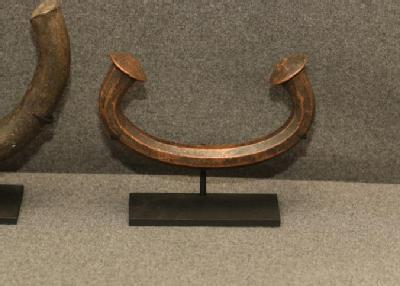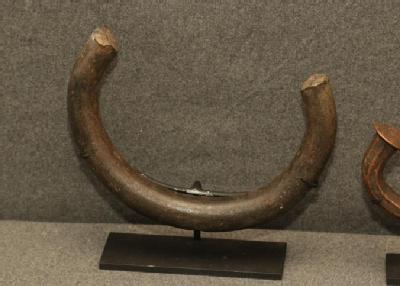Payment is due by Monday, October 3 at 3PM!
Pickup in Pleasant Valley, NY must be completed by Tuesday, October 4 at 3PM no exceptions!
All lots sold as is, where is. There is a 15% Buyers Premium for all lots purchased. Payment methods include cash, PayPal, MC, Visa, Discover or good check. You can make credit card payment online by going to your Member Area and selecting your invoice. To pay by PayPal, send money to info@aarauctions.com.
*NOTE* Shipping is available on all items.
THE FOLLOWING COMMERCIALLY AVAILABLE REFERENCES ARE CITED BY THE AUTHOR(S) NAME AND PUBLICATION DATE IN VARIOUS LOTS:
ROSEN PP, ROSEN MS “MASKS FROM WEST AND CENTRAL AFRICA” 2013
SPRING C “AFRICAN TEXTILES” 1989
GILLOW J “AFRICAN TEXTILES” 2003
BACQUART J-B “THE TRIBAL ARTS OF AFRICA” 1998
ADLER P, BARNARD N “AFRICAN MAJESTY” 1992
PHILLIPS T “AFRICA. ART OF A CONTINENT” 1999
ROSEN MS, ROSEN PP “THE COLORFUL SOGO BÒ PUPPETS OF MALI” 2012
ROY CD, WHEELOCK TGB. “LAND OF THE FLYING MASKS” 2007
Auction Info
Payment is due by Monday, October 3 at 3PM!
Pickup in Pleasant Valley, NY must be completed by Tuesday, October 4 at 3PM no exceptions!
All lots sold as is, where is. There is a 15% Buyers Premium for all lots purchased. Payment methods include cash, PayPal, MC, Visa, Discover or good check. You can make credit card payment online by going to your Member Area and selecting your invoice. To pay by PayPal, send money to info@aarauctions.com.
*NOTE* Shipping is available on all items.
THE FOLLOWING COMMERCIALLY AVAILABLE REFERENCES ARE CITED BY THE AUTHOR(S) NAME AND PUBLICATION DATE IN VARIOUS LOTS:
ROSEN PP, ROSEN MS “MASKS FROM WEST AND CENTRAL AFRICA” 2013
SPRING C “AFRICAN TEXTILES” 1989
GILLOW J “AFRICAN TEXTILES” 2003
BACQUART J-B “THE TRIBAL ARTS OF AFRICA” 1998
ADLER P, BARNARD N “AFRICAN MAJESTY” 1992
PHILLIPS T “AFRICA. ART OF A CONTINENT” 1999
ROSEN MS, ROSEN PP “THE COLORFUL SOGO BÒ PUPPETS OF MALI” 2012
ROY CD, WHEELOCK TGB. “LAND OF THE FLYING MASKS” 2007
Categories:
More Details
High Bid:
$50.00 – lg
Auction Type: One Lot
Quantity: 1
Bidding has closed on this lot









